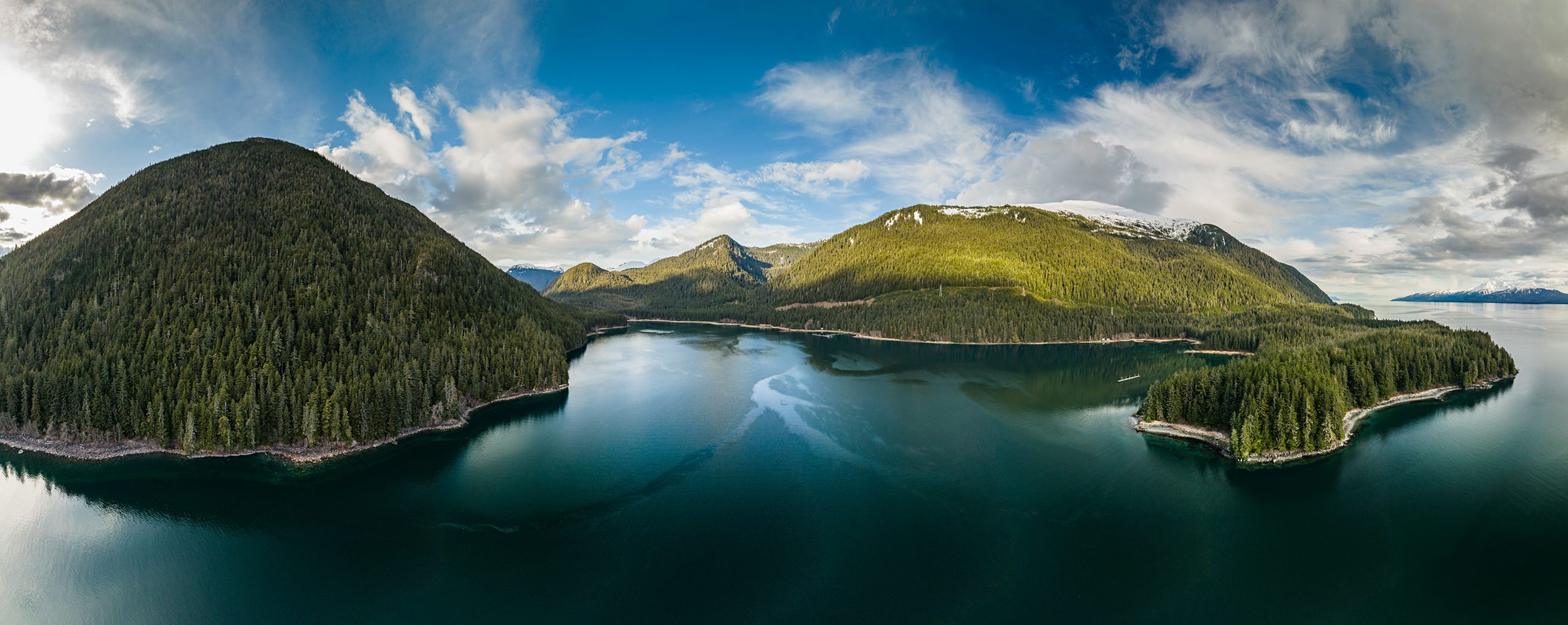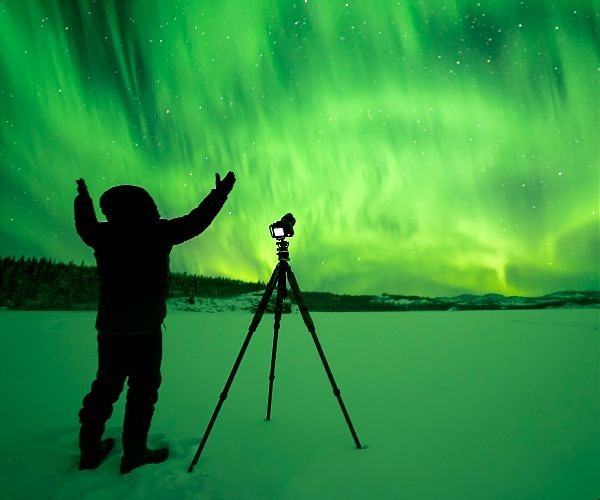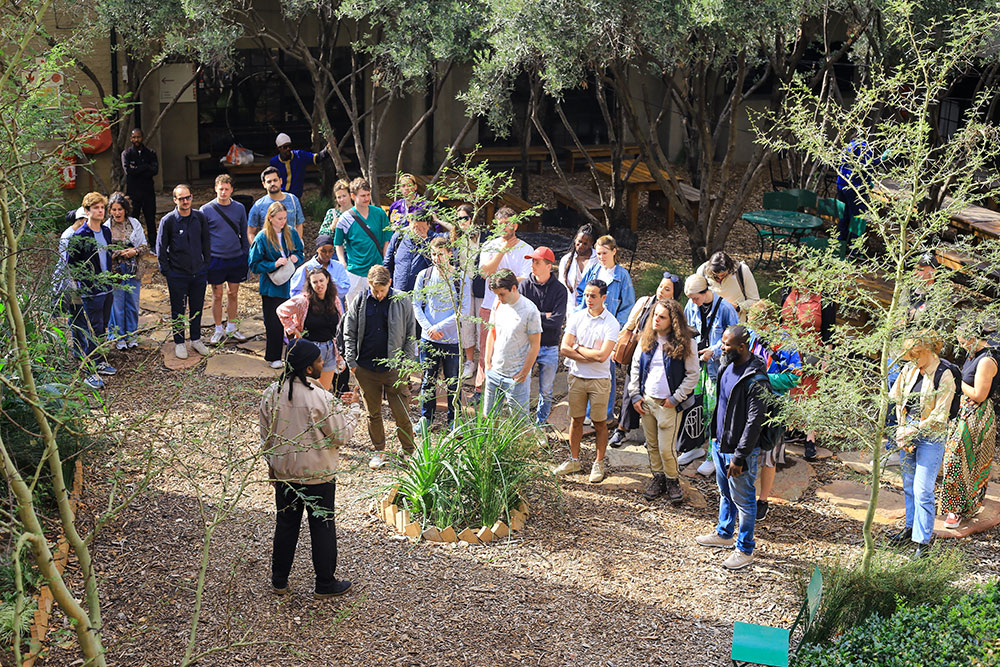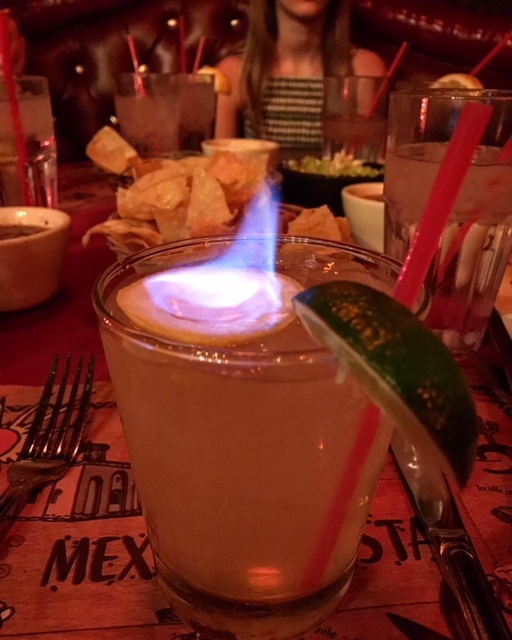
Taku Harbor’s Legendary Man and Myth
I stepped into the low light of a derelict cabin and studied moldering walls, broken glass, and filth. My three-year-old son clung to me, scanning the shadows.
“Daddy, there could be ghosts! We need to get out of here!” he said. The cabin once belonged to Henry “Tiger” Olson—a hermit, philosopher, and mystic who lived most of his life in Taku Harbor, 20-some miles south of Juneau.
By the time we got there, it had been more than 40 years since he had occupied the cabin. To be honest, the place creeped me out a little as well. It wasn’t just Tiger’s cabin that felt haunted, though—Taku Harbor is filled with ruins and stories.
The harbor is part of the Tlingit T’aaku Kwáan’s territory. The Hudson’s Bay Company established their Fort Durham Trading Post there in 1840, only to abandon it three years later. A census conducted in 1880 found there were 269 T’aaku people living in Taku Harbor. As miners established giant mines in Juneau, many people would move to the city to work for wages. At the turn of the 20th century, a salmon cannery and the first ever cold storage plant to operate in Alaska were built in the harbor. Many Tlingit returned, and workers from far and wide traveled to work in the cannery and plant. Ownership of the cannery changed a handful of times, until it was purchased by Libby, McNeil, & Libby in 1918. That year, Tiger Olson arrived in Taku Harbor to work at the cannery.
Tiger was a legend in his own time and revered by many—from salty fishermen to men like Father Hubbard, Judge Robert Boochever, and Governor Walter Hickel. He was born on June 30 in the late 1800s—he never would tell his birth year—in northern Minnesota. A self-described “kindergarten dropout,” he made his way west working as a sheepherder in Montana, then in “gal darn logging camps” in Oregon and Washington, before heading to Alaska. There are three different stories of how he got his nickname “Tiger.” In the booklet Tiger of Taku, Tiger tells his interviewer that, “In the early days I was known as ‘Lamb’ Olson. When I first came to Alaska, I brought six sheepskins from Montana. I discovered I could lie under these and ‘baa’ like a lamb and attract wolves. They would come and I would send them to the ‘spirit world’ and collect the bounty. The Indians called me ‘tiger’ for making a decoy for the wolves.”
Another account says his nickname came from his intense and magnetic gaze. Someone who wrote about Tiger said Tlingit people claimed his eyes shone in the dark and called him “devil” or “tiger.” Tiger was obsessed with the spirit world. He would frequently hold seances in his small cabin with interested visitors. These sort of antics no doubt scared a lot of people. It was also during a séance that a medium told Olson that in a past life, among other things, he’d been a tiger.
Tiger worked at the Libby, McNeil, & Libby cannery in maintenance and as a handyman. He watched the population of Taku Harbor rise to more than 500 people until 1951, when the cannery was officially closed down, and Tiger became the sole inhabitant left in Taku Harbor. For six months each year, during the winter, he was alone. He made his living primarily from trapping and occasionally by prospecting. During summer months, Taku Harbor can be a busy place. It is one of a few safe stopovers for boaters along the rugged coastline. Tiger’s eccentric and, most often, kind nature attracted a lot of attention. He explained the reason that he was a local celebrity was because, “It’s the things I talk about. Most people don’t talk about those things.”

in the rugged coastline south of Juneau. Photo by Chris Miller
The spirit world and reincarnation were favorite themes. Tiger believed each human soul is billions of years old, has spent billions of years in different places, and is composed of hundreds of identities. He joked in The Wit and Wisdom of Tiger Olson, a booklet he wrote with Richard Bayne, that he was insane and lacked intelligence, which explained why he chose to live in Taku Harbor. He was famous for his love of children, and for giving each child who came to Taku Harbor a silver dollar. Over the years, that added up to $1,200.
One of the most fascinating stories about Tiger occurred between the mid and late 1960s and involved a teenager named Paul Anderson. While living in an orphanage in the Lower 48, Paul read an article about the hermit in Field and Stream magazine. He felt compelled to come live with and learn from Tiger, and without notifying the old man, traveled all the way to Taku Harbor on his own. When he greeted Tiger and told him his plan, Tiger didn’t want anything to do with it. Then, according to Tiger, he had a vision of Paul’s deceased mother standing behind the boy asking him to take care of Paul. So, Tiger did. He taught him to trap and hunt and shared his philosophy with Paul for a year or two before sending him back south for schooling. Another variation of that story is that Tiger grew tired of Paul and hauled him out of Taku Harbor by boat and left him on a distant wilderness shore to fare for himself. Paul had to hail a passing ship to get back to civilization. The truth is hard to tell, which is the way Tiger liked it.
In 1974, when Tiger’s friends believed he was turning 90, over 200 boats arrived in Taku Harbor and threw him a surprise birthday party. When asked why he always seemed happy, he replied, “Well, what is happiness? Happiness is an illusion—so is sorrow—so is business—so is discouragement—so is failure—just an illusion, so why not keep the illusion of happiness?”
After around 60 years living in Taku Harbor, Tiger left for the Sitka Pioneer Home, where he died in 1980. Bayne’s book and Olson’s obituary in the Sitka Sentinel end with the same Tiger Olson quote, as he shares his thoughts on death.
“If there’s a blueberry bush…and the raindrops come on it…and water from the rain drops into Taku Harbor, it’s immediately Taku Harbor, it’s immediately the Pacific Ocean, it’s immediately on all the shores of this world. And that’s the way with the human soul. When it drops into the eternal spirit, it’s in all the places of the world, and all the places of eternity.”

My son and I spent the night with our friend Chris Miller in Taku Harbor. Chris and my boy ran around the dock in the darkness, illuminating schools of salmon fry with a flashlight. My son asked for several bedtime stories about Tiger Olson. I made up all sorts of fantastical and truth-bending adventures of which I imagined Tiger would have approved.
In the morning, before heading back to Juneau, my son wanted to return to the cabin. This time he looked around with wonder instead of fear.
“Daddy, tell me a Tiger Olson story,” he said.
Publisher: Source link
Latest Posts
-
31 July 2025
-
26 July 2025
-
14 July 2025
-
01 July 2025
-
07 August 2025
-
29 July 2025
-
20 February 2025
-
04 February 2025
Newsletter
Sign up for free and be the first to get notified about new posts.
Get The Best Blog Stories into Your icountox!
Sign up for free and be the first to get notified about new posts.










